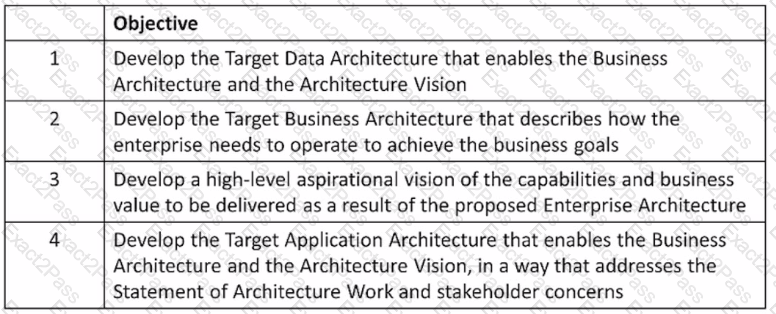Last Update 5 hours ago Total Questions : 104
The TOGAF Enterprise Architecture Bridge Exam (English) content is now fully updated, with all current exam questions added 5 hours ago. Deciding to include OGEA-10B practice exam questions in your study plan goes far beyond basic test preparation.
You'll find that our OGEA-10B exam questions frequently feature detailed scenarios and practical problem-solving exercises that directly mirror industry challenges. Engaging with these OGEA-10B sample sets allows you to effectively manage your time and pace yourself, giving you the ability to finish any TOGAF Enterprise Architecture Bridge Exam (English) practice test comfortably within the allotted time.
What are the following activities part of?
. Risk classification
. Risk identification
. Initial risk assessment
What provides context for architecture work, by describing the needs and ways of working employed by the enterprise?
Consider the following statement.
According to the TOGAF standard, a governed approach of a particular deliverable will ensure adherence to the principles, standards, and requirements of the existing or developing architectures.
Which deliverable does this refer to?
Consider the following statement.
Projects may cycle between ADM phases, in planned cycles covering multiple phases.
What does it illustrate?
Complete the sentence Business Transformation Readiness Assessment is_________________.
What is the purpose of the Preliminary Phase?
Consider the following ADM phases objectives.

Which phase does each objective match?

